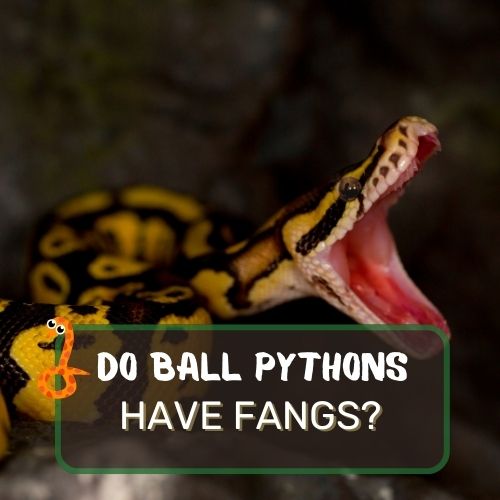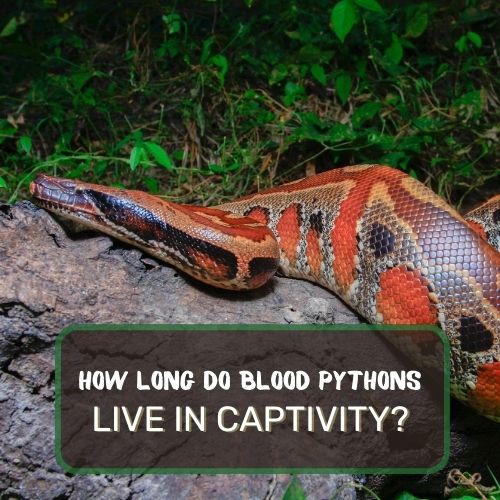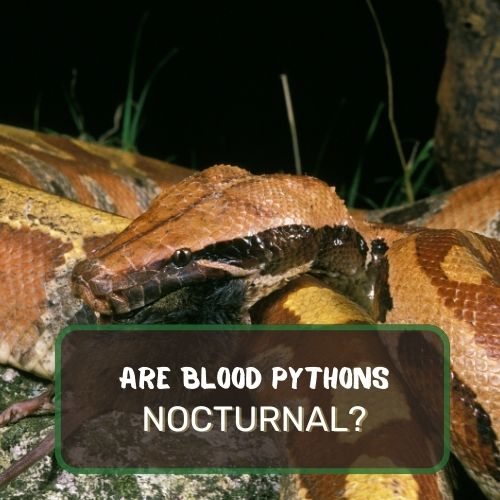
When it comes to the intriguing world of reptiles, one question that often slithers into conversations is, “do ball pythons have fangs?”
This question stems from a mix of curiosity, myths, and sometimes, plain old fear.
In this article, we’ll dissect the dental anatomy of ball pythons, shedding light on their bite, behavior, and the myths surrounding these gentle creatures.
By diving deep into their world, we aim to provide clarity, dispel misconceptions, and offer insights into their unique adaptations.
Whether you’re a seasoned herpetologist, a potential snake owner, or just someone with a burning curiosity, this article promises to unravel the mysteries of ball python fangs and more.
Dive in and discover the fascinating world of these remarkable reptiles!
Table of Contents
Do Ball Pythons Have Fangs?
Ball pythons do not have fangs. Instead, they possess a set of sharp, curved teeth designed to grasp and hold onto their prey. Fangs are specialized teeth primarily found in venomous snakes, which they use to inject venom into their prey. Ball pythons, on the other hand, are non-venomous constrictors. They kill their prey by wrapping their bodies around it and squeezing, rather than using venom.
So, while ball pythons can indeed bite if threatened or mishandled, they don’t have the venom-delivering fangs that some other snake species have.

The Anatomy of a Ball Python’s Bite
Ball pythons, with their docile nature and striking patterns, have become a favorite among reptile enthusiasts. But when it comes to their bite, there’s a lot of curiosity and, often, misinformation.
Let’s dive deep into the anatomy of a ball python’s bite and debunk some myths.
Pythons as Constrictor Snakes: How They Kill with Brute Force
When you think of snakes, the first image that might pop into your mind is that of a venomous serpent, fangs dripping with poison. But not all snakes are created equal. Ball pythons, for instance, are constrictors.
This means they don’t rely on venom to subdue their prey. Instead, they use their powerful muscles.
Imagine being given a tight hug that gets tighter every time you exhale, leaving no room for another breath. That’s essentially how constrictors like ball pythons operate. They wrap their bodies around their prey and squeeze.
Each time the prey exhales, the python tightens its grip, preventing the prey from taking another breath. It’s a method that’s both efficient and effective, requiring no venom at all.
The Myth and Reality of Python Fangs: Addressing the Main Question
So, “do ball pythons have fangs?” The short answer is no. But let’s delve a bit deeper.
Fangs are specialized teeth designed for one primary purpose: to deliver venom. They’re like nature’s syringes. Ball pythons, being non-venomous, have no need for such apparatus.
Instead, they have rows of sharp, backward-curving teeth. These teeth are designed for holding onto prey, ensuring it doesn’t escape while the python goes about its constricting business.
It’s easy to see how the myth of ball pythons having fangs might have started. After all, they do have teeth, and a bite from a ball python, while not venomous, can still be quite startling.
But it’s essential to differentiate between the teeth of a constrictor and the fangs of a venomous snake.
Comparison with Venomous Snakes
To truly understand the difference, let’s compare ball pythons with a venomous snake, say, a rattlesnake. Rattlesnakes have long, hollow fangs through which they inject venom into their prey.
These fangs can fold back when not in use. Ball pythons, on the other hand, have several rows of small, sharp teeth that are solid and don’t fold.
Another key difference lies in their behavior. Venomous snakes, when threatened, might strike and inject venom as a defense mechanism.
Ball pythons, being the gentle souls they are, would much rather curl up into a tight ball (hence their name) and hide their head in the center, hoping the threat goes away.
In conclusion, while ball pythons do have teeth designed to hold onto their prey, they certainly don’t have venom-delivering fangs.
Understanding this distinction not only helps in dispelling myths but also in appreciating the diverse and fascinating ways in which nature equips its creatures for survival.

Fangs vs. Teeth: Know The Difference
When it comes to the dental anatomy of snakes, there’s often confusion between fangs and teeth. But there’s a world of difference between the two, and understanding this distinction is crucial.
Difference between Fangs and Teeth
At the most basic level, all snakes have teeth, but only some have fangs. Teeth are general structures used for grasping and holding onto things, be it food or, in the case of some snakes, their prey.
Fangs, on the other hand, are specialized teeth, often longer and sharper than regular teeth.
The Purpose of Fangs in Venomous Snakes
Fangs play a vital role in the survival of venomous snakes. These elongated teeth are hollow or grooved, acting as channels for venom delivery. When a venomous snake bites, it injects venom from its glands through these fangs into its prey or threat.
This venom can immobilize or even kill the prey, making it easier for the snake to consume. In contrast, non-venomous snakes, like ball pythons, don’t have this venom delivery system, and hence, no fangs.

Ball Pythons and Their Prey
Ball pythons, with their intricate patterns and gentle demeanor, have a unique way of dealing with their prey.
How Pythons Constrict and Cause the Circulatory System of Their Prey to Fail
When a ball python captures its prey, it quickly wraps its muscular body around it, squeezing tightly.
This constriction doesn’t just suffocate the prey. Instead, it causes the prey’s circulatory system to fail by increasing the pressure, preventing the heart from pumping blood effectively. It’s a swift and efficient method.
The Process of Swallowing Prey Whole
Once the prey is subdued, the ball python begins the fascinating process of swallowing it whole. Starting from the head, the python works its way down, consuming its meal in one piece.
Debunking Myths: Do Pythons Unhinge Their Jaws?
A common myth is that pythons unhinge their jaws to swallow large prey. In reality, they don’t. Instead, their jaws are connected by very flexible ligaments, allowing them to stretch and accommodate large meals.
How Their Teeth are Designed for Grabbing and Holding onto Prey
Ball python teeth are small, sharp, and curve backward. This design ensures that once they grab onto their prey, it’s almost impossible for it to escape. These teeth aren’t for chewing but for holding.
Once the prey is securely in its grip, the ball python can go about its methodical process of constriction and consumption.
In the world of snakes, understanding the nuances of their anatomy and behavior helps us appreciate these creatures even more.
From the specialized fangs of venomous snakes to the constricting prowess of the ball python, each species has its unique adaptations for survival.

Ball Pythons: Behavior and Temperament
Ball pythons, often hailed as the gentle giants of the snake world, have a behavior and temperament that’s both intriguing and endearing.
Their popularity in the pet trade isn’t just because of their stunning patterns but also due to their generally calm disposition. However, like all creatures, they have their quirks and individual personalities.
General Behavior: Docile and Not Inclined to Bite
For the most part, ball pythons are docile creatures. They’re more likely to curl up into a tight ball (hence their name) when threatened than to lash out.
This “balling up” is their primary defense mechanism, where they protect their head by tucking it into the center of the coil. It’s a testament to their preference for peace over confrontation.
Individual Personalities: Some are Calm, While Others Can Be Aggressive
While the general temperament of ball pythons leans towards the calm side, it’s essential to remember that each snake is an individual. Just as humans have varied personalities, so do ball pythons.
Some might be incredibly laid-back, enjoying (or at least tolerating) regular handling sessions, while others might be a tad more skittish or defensive. It’s crucial to get to know your python and understand its unique personality, ensuring a harmonious relationship.
Common Reasons for Bites: Mistakes During Feeding, Surprising the Snake, etc.
Though ball pythons aren’t naturally inclined to bite, there are situations where they might feel compelled to. One of the most common reasons is a mistake during feeding.
If your hand smells like their food, a hungry ball python might mistake it for a meal! Another reason could be surprising or startling the snake. Just like us, they aren’t fans of sudden, unexpected movements or disturbances.
It’s always best to approach them calmly and predictably to avoid any defensive reactions.

What Happens When a Ball Python Bites?
The mere thought of a snake bite can send shivers down anyone’s spine. But when it comes to ball pythons, the experience is often more startling than harmful. Let’s delve into the dynamics of a ball python bite and what one can expect.
Differentiating Between Defensive Bites and Feeding Bites
Ball pythons, like many snakes, have two primary reasons to bite: defense and feeding. A defensive bite usually happens when the snake feels threatened.
In this scenario, the bite is typically a quick strike followed by an immediate release. It’s their way of saying, “Back off!”
On the other hand, a feeding bite is more deliberate. The snake believes it’s biting into prey. Instead of a quick strike and release, they might hold on, even attempting to constrict, thinking they’ve got a meal.
The Sensation of a Bite: More Surprising Than Painful
If you’ve ever been nipped by a playful cat or dog, you have a rough idea of what a ball python bite feels like. It’s often described as a quick pinch, more surprising than painful. Remember, ball pythons don’t have fangs or venom.
Their teeth are designed to grip, not to inflict pain. Most bites from ball pythons, especially younger or smaller ones, result in minor puncture wounds or scratches.
Importance of Not Pulling Away During a Bite
It’s a natural reaction to pull away when bitten. However, with ball pythons, this can be counterproductive. Their teeth are curved backward, designed to hold onto prey.
If you pull away, you risk injuring the snake by breaking its teeth or causing more significant injury to yourself. Instead, remain calm, gently hold the snake, and wait for it to release on its own.

Safety Precautions with Ball Pythons
Ball pythons are generally docile, but like any animal, they can become stressed or agitated. Here are some safety precautions to ensure harmonious interactions.
Proper Handling Techniques to Avoid Bites
Always approach your ball python calmly and deliberately. Avoid sudden movements and ensure the snake is aware of your presence before picking it up.
Handling your python regularly (but not excessively) can also help it become more accustomed to human interaction.
Importance of Washing Hands After Handling Prey Items
The scent of prey, like mice or rats, can linger on your hands. To a hungry ball python, this makes your hand smell like dinner! Always wash your hands thoroughly after handling prey items and before handling your snake.
Using Tools Like Tongs During Feeding
Using tongs or forceps to offer food keeps your hands at a safe distance and reduces the risk of accidental bites. It also helps differentiate feeding time from regular handling sessions, making it less likely for the snake to associate your hand with food.

Final Word
You’ve journeyed through the captivating realm of ball pythons, unraveling myths and diving deep into their dental anatomy.
By now, you’ve discovered that these creatures, while equipped with sharp teeth designed to grip their prey, don’t possess the venom-delivering fangs often associated with some of their slithery counterparts.
Their method of subduing prey is through constriction, a testament to nature’s diverse strategies for survival. Ball pythons, with their docile temperament, are more than just their bite.
They’re a blend of beauty, strength, and mystery, deserving of our understanding and respect.
As you move forward, armed with this newfound knowledge, remember that education is the key to dispelling fears and misconceptions.
Whether you’re considering bringing one of these magnificent creatures into your home or simply wanted to quench your thirst for knowledge, you’ve taken a step towards understanding the intricate tapestry of the animal kingdom.
Keep that curiosity alive, continue seeking knowledge, and always approach the natural world with an open heart and mind. Your journey of discovery is just beginning, and the wonders it holds are limitless. Keep exploring!
Frequently Asked Questions
Ball pythons can come with a flurry of questions, especially for new snake enthusiasts or concerned potential owners. Let’s address some of the most common queries about these fascinating reptiles.
Do Ball Python Bites Hurt?
While any bite can be startling, a ball python bite is often described as a quick pinch. It’s more surprising than painful. The sensation might be comparable to a minor scratch or a cat’s playful nip. However, the emotional shock of being bitten might amplify the perceived pain.
Do Ball Pythons Have Sharp Teeth?
Yes, ball pythons have rows of small, sharp teeth. These teeth are designed to grip and hold onto their prey, ensuring it doesn’t escape as the snake begins the constriction process. They’re not meant for chewing but for securing their meal.
Do Ball Pythons Have Retractable Fangs?
No, ball pythons do not have retractable fangs. In fact, they don’t have fangs at all! Fangs are typically associated with venomous snakes and are used to inject venom. Ball pythons, being non-venomous, have no need for such specialized teeth.
Why Did My Ball Python Bite Me?
There could be several reasons. It might have mistaken your hand for food, especially if you recently handled its prey or if your hand had a scent it found enticing. Alternatively, it could have been a defensive bite if the snake felt threatened or stressed.
Do Ball Pythons Have Venom?
No, ball pythons are non-venomous. They are constrictors, meaning they subdue their prey by wrapping around it and squeezing, rather than using venom. Their teeth are designed for holding onto prey, not for delivering venom.




0 Comments